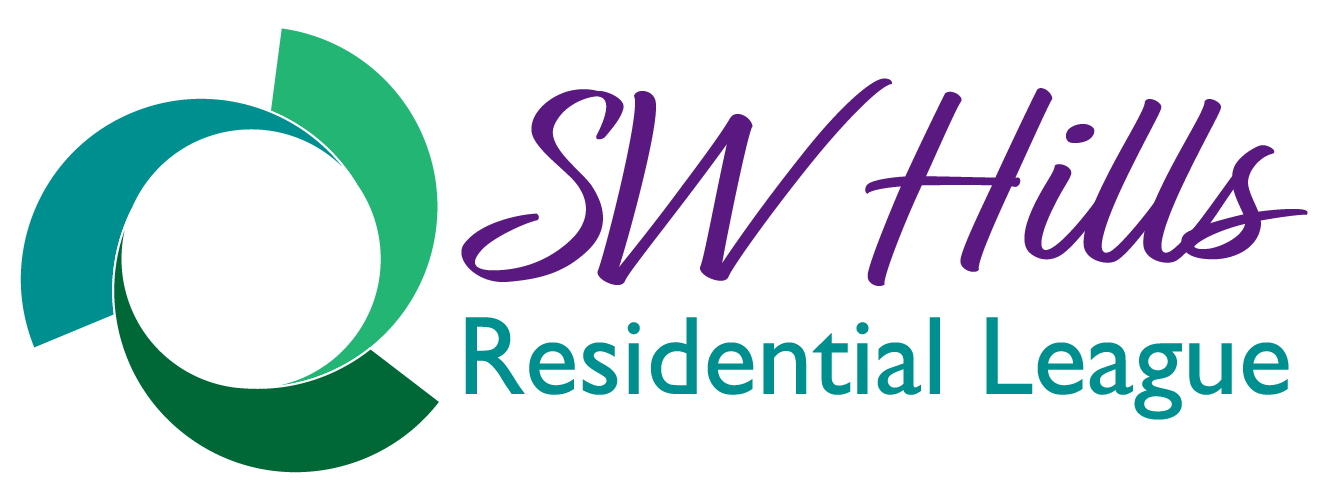SWHRL has Firewise Community Program– the Governors Park Neighborhood Firewise Community – and Portland Fire and Parks would like to see others formed in our neighborhoods.
Firewise Community Program https://www.portland.gov/fire/your-safety/firewise-community-program
The Firewise Communities/USA program is designed to provide an effective management approach for preserving wildland living aesthetics. The program can be tailored for adoption by any community and/or neighborhood association that is committed to ensuring its citizens maximum protection from wildland fire. Community members and environmental specialists work collaboratively to assess the community and gather data when considering a community as a Firewise community candidate.

Wildfires will happen–exclusion is not a choice. The variables in a fire scenario are when the fire will occur, and where. The assessment addresses the wildfire-related characteristics. It examines the area’s exposure to wildfire as it relates to ignition potential. The community assessment does not focus on specific homes but examines the community as a whole.
The result of the assessment will capture how wildfire behavior will be dominated by the residential characteristics of the community. The good news is that by addressing community vulnerabilities, residents will be able to substantially reduce their exposure to loss. Relatively small investments of time and effort will reap great rewards in wildfire safety.
In coordination with Portland Fire & Rescue, assessments are conducted upon the resident’s request. The assessments focus attention on the home ignition zone and provide recommendations on ways to eliminate the fire’s potential relationship with the house. It can be accomplished by disconnecting the house from high and/or low-intensity fire that could occur around it. Removal of some vegetation, trimming plants and cutting back trees around the home are some examples of good Firewise practices.

When adequately prepared, a house can likely withstand a wildfire without the intervention of the fire service. Further, a house and its surrounding community can be both Firewise and compatible with the area’s ecosystem. The Firewise Communities/USA program is designed to enable communities to achieve a high level of protection against Wildland Urban Interface (WUI) fire loss even as a sustainable ecosystem balance is maintained.
Sign up for a WUI Assessment
To schedule an assessment, click on the link and fill out the online form.
For questions regarding the program or need assistance with filling out an application, please contact us at (503)823-3741.
For further information regarding the Firewise Communities USA Program please visit:
Login to the portal to start your application. Apply to become a Firewise District.
Organize it
Create a board or committee of volunteers to represent your community, including residents and partners such as local forestry agencies or the fire department. Identify a resident leader who will be the program point of contact. The board or committee defines the boundaries of the site and determines the number of individual single family dwelling units. Community size: Minimum of 8 dwelling units and a maximum of 2,500. Multiple Firewise USA® sites can be located within a city/town or master-planned community/HOA.
Plan it
The board or committee will collaborate with their local wildfire expert to complete a community wildfire risk assessment. The assessment should be a community-wide view that identifies areas of successful wildfire risk reduction and areas where improvements could be made. Emphasis should be on the general conditions of homes and related home ignition zones. The assessment is a living document and needs to be updated at a minimum every 5 years.
- Contact your state liaison to learn more about the requirements and how to get started
- Some states use the Firewise USA template. (PDF)
- Online training – Community Wildfire Risk Assessment Tutorial
The board/committee will use the risk assessment to create a three-year action plan, broken down by year, that identifies and prioritizes actions to reduce ignition risk to homes. These can include communitywide investments along with suggested homeowner actions and education activities that participants will strive to complete annually, or over a period of multiple years. This document is required to be updated at least every three years. As circumstances change (e.g., completing activities, experiencing a fire or a natural disaster, new construction in community, etc.), the action plan may need to be updated more frequently
Do it
Each year, neighbors complete educational and risk reduction actions identified in the plan. These go towards your site’s annual reporting efforts.
- Find examples (PDF) of activities that count towards your investment.
- Use our volunteer hourly worksheet (PDF) to collect information from residents in your community
At a minimum, each site is required to annually invest the equivalent of one volunteer hour per dwelling unit in wildfire risk reduction actions. If your site has identified 100 homes within its boundary, than 100 hours of work or the monetary equivalent, based on the independent sector value of volunteer time, need to be completed for that year.
Talk about it
When the above criteria have been met, the Resident Leader applies for recognition through the Firewise® Portal (portal.firewise.org), describing educational and mitigation work in the site. Each year, sites renew their status by reporting their activity. Please note: Individual states can request additional application requirements.
What happens next?
State liaisons will approve applications, with final processing completed by the NFPA.
Reference our interactive map to see all active Firewise USA sites.
Questions? Contact the Firewise team.
